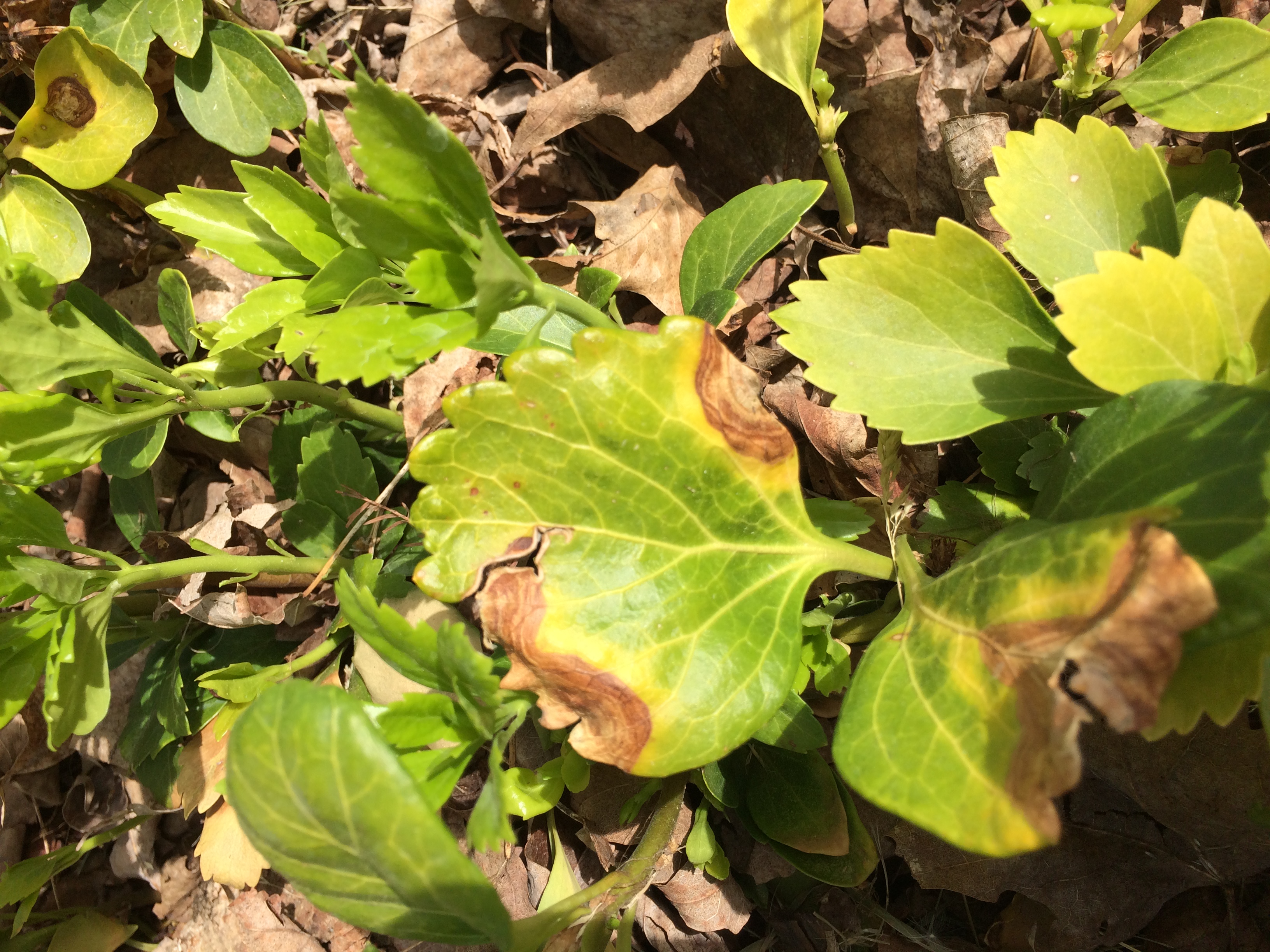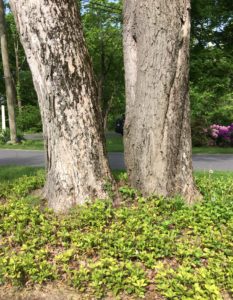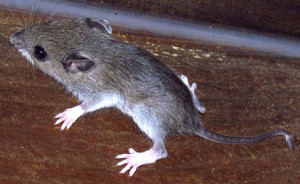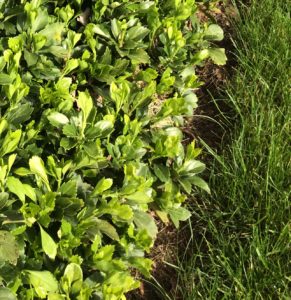On the “hate” side of the ledger, pachysandra is a tick magnet. (See “Pachysandra and Lyme Disease” to the left.) And pachysandra is…well, boring. A beautiful green lawn can be the pride of the neighborhood, but nobody notices a healthy pachysandra patch. It is the ultimate utility plant that goes unnoticed until that rare time when something goes wrong. And lately, something has been going wrong with pachysandra patches all over Fairfield County.
Volutella Blight, more commonly referred to as Pachysandra Blight, is a fungus disease that has been popping up this spring and summer. The disease causes necrotic blotches on the leaves and stems and can cause defoliation of portions of the pachysandra patch. The fungus disease spreads during wet spring seasons. When an outbreak occurs, suddenly that boring patch of pachysandra you never noticed becomes an alarming eyesore in your beautiful landscape.
An important thing to realize about this disease is the Volutella fungus is always around. Even the most healthy patch of pachysandra will have some of the disease pathogens lurking in its dense foliage, and a wet, rainy spring will mean more opportunity for the fungus to spread. But like many infections that impact both people and plants, a healthy organism is able to fight off the disease attack without problems. But when we get stressed or tired our bodies are less able to fight off those pathogens and suddenly we are sick. And that is exactly what has been happening to our poor pachysandra the last couple of years.
The severe summer droughts of 2015 and 2016 put a tremendous strain on our landscapes. Even well established plants with healthy root systems have been strained by the lack of water. And when water is in short supply, every green plant we see is competing for this vital resource. It is very common to see a circle of stressed pachysandra surrounding the base of a stately oak or maple tree. Some of these massive trees are hundreds of years old and have seen their share of droughts over the ages. They didn’t get to that age without developing the resources needed to survive the worst nature has to offer. In a battle for moisture between an ancient tree and a frivolous pachysandra patch, the tree will win every time.
WHAT YOU CAN DO
Pachysandra growing over the root systems of large trees have been the most impacted by Pachysandra Blight. The cause is as much the drought as it is the disease. While the defoliation of a patch of pachysandra can be quite alarming to a homeowner, the good news is that boring pachysandra is very resilient. If this happens to your landscape don’t panic.
-
- ♦ Raking out any infected leaves and sending them off your property can reduce the amount of pathogens next spring.
- ♦ In severe cases you can even mow infected areas.
- ♦Put down some fertilizer to encourage new growth.
- ♦ If the outbreak is really bad the new growth can be sprayed with a fungicide to reduce the chances of infection.
- ♦ Oh…and pray for rain.
* * *
Nature is beautiful, but it is also a cruel world where survival of the fittest is the law. Your maple tree and pachysandra patch may seem to be living in perfect harmony out there on your front lawn. But when push comes to shove, the maple tree is taking the moisture it needs and the pachysandra is on its own.







Recent Comments